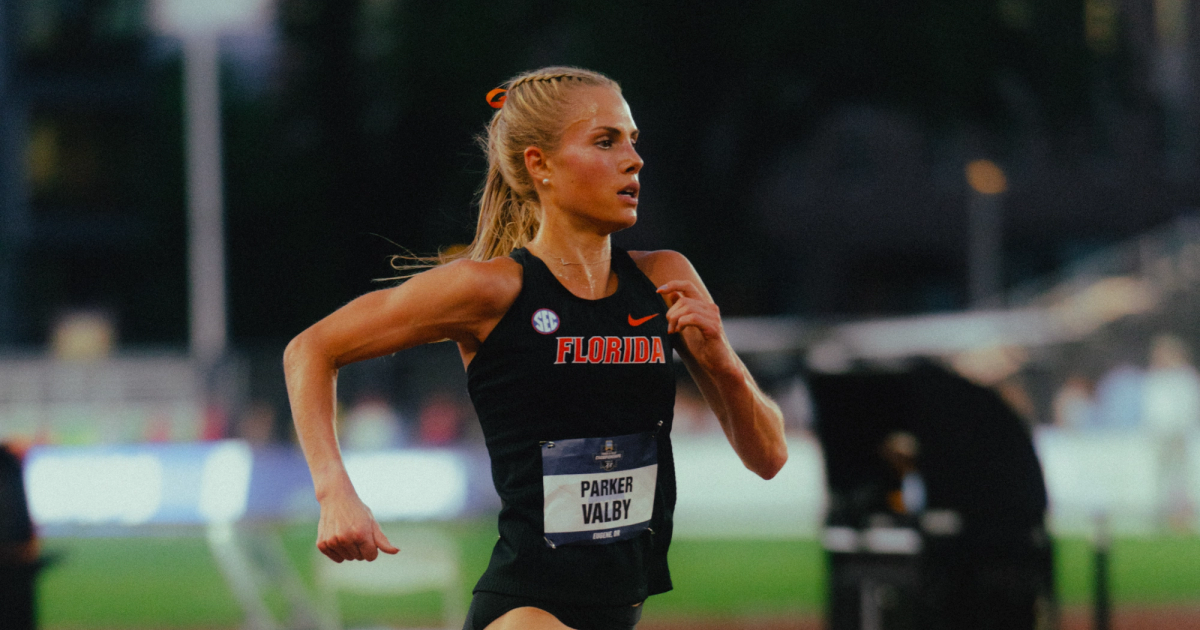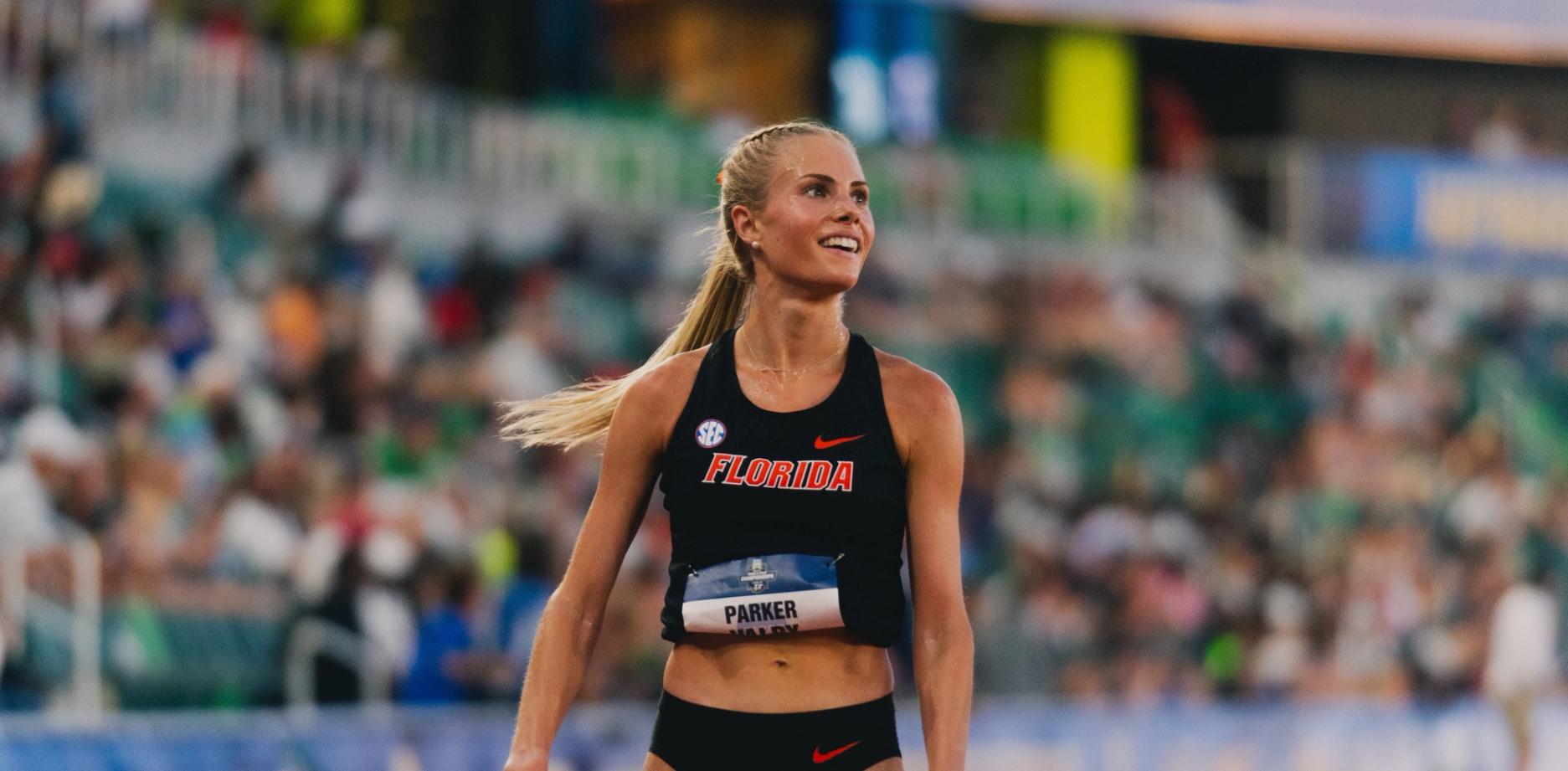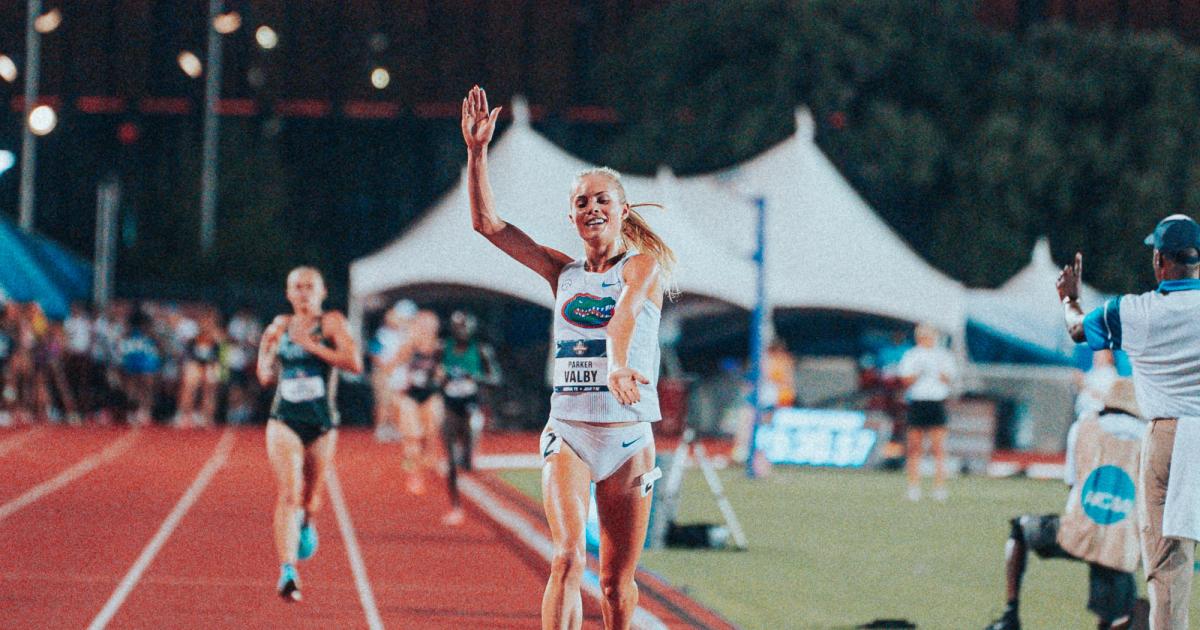By Chris Chavez
June 12, 2024
Remember my magnum opus on the kooky state of U.S. women’s 10,000m running? Parker Valby was just a side note in that, but alas, now I’ve got to write a bit more on the matter. Valby just capped one of the greatest academic years by an NCAA distance runner ever, having won five national titles. She’s a star in the making and will undoubtedly be a contender at the U.S. Olympic Trials.
In the 5000m, she’s the seventh-fastest American woman this year and was just 0.18 seconds shy of the Olympic standard with her victory at NCAAs. It’s worth noting that for this race, she wore what experts might call “normal spikes.” Now for the 10,000m, Valby came out wearing what looked like a pair of Vaporflys with spikes in them.

Audrey Allen/@audreyallen17
It was hard not to be distracted by Parker Valby’s customized super shoe + spikes.
Super shoes on the track are a no-no for World Athletics qualifying purposes on the track but there’s no regulation in the NCAA, which means many athletes opt for the chonky bois to bounce around the track for 25 laps. However, those performances would not count toward an athlete’s World Ranking. Valby opted for them to save her legs for the 5000m but she may have missed a chance at improving her ranking ahead of the Trials.
We still don’t know if she’ll even run the 10,000m at the Trials but I figured I would crunch some of the numbers on what it may take at the Trials for her to qualify. Once you remove some people who are injured (like Alicia Monson) or those who will likely opt for other events at the Olympics (Romania’s Joan Chelimo Melly and Finland’s Camilla Richardsson are both qualified in the marathon), Valby may only need to average 1210 points to get in the Road to Paris quota.
She would need to get ahead of the likes of Slovenia’s Klara Lukan or Mexico’s Laura Galvan. Over the next few weeks, Americans will be rooting for slow times at national championship 10,000m finals for all other countries who don’t already have three qualified athletes for Paris.
As of Tuesday, based on the current Road to Paris List, and our own calculations after Lukan’s Euros performance (Remember: It’s a moving target!), Valby’s best shot at making the team in the 10,000m would be to get to an average of 1210 (to go ahead of Lukan’s 1209-point total). Since WA scores the average of an athlete’s two best results, and Valby’s Bryan Clay showing is worth 1221, she needs at least a 1199-point showing to get there.
She can do so by:
– Finishing 3rd at the Trials and running 31:43.72 or faster: 45 placing points + 1154 result points = 1199 performance score.
– Finishing second at the Trials and running 31:49.35 or faster: 50 placing points + 1149 result points = 1199 performance score
– Winning the Trials and running 32:00.65 or faster = 60 placing points + 1139 result points = 1199 performance score.
Of course, the only way for Valby to be 100% certain she’ll be a part of the U.S. 10,000m contingent in Paris is to place top three and run under the Olympic standard. But in the entire history of the U.S. Olympic Trials, the women’s 10,000m has never been won in a time faster than that current Olympic standard of 30:40.00, and more often than not, the race plays out far more tactically. Third place last year was 32:22 and first was 32:12. In 2022, the race was won in 30:49 and third place was 31:29. And at the last Trials, Emily Sisson’s beatdown of the field in the crazy heat resulted in a 31:03 – third was 31:18.
Insofar as it’s possible to hunt down a world ranking, Valby knows roughly what she has to do: finish on the podium in under 31:40. But if anyone in the field feels they’re capable of soloing an Olympic Trials record, it’s gotta be the front-running Floridian, who’s no stranger to flying solo in a championship setting.
She has a very viable (Valbyble?) path to the Olympics – and that’s not even getting into her odds in the 5,000m. But while wearing WA-legal shoes for the NCAAs 10,000m might have beat up her calves a bit, it also would have also pared down the amount she now needs to stress over the early evening Eugene weather and pacing up front. (And it would have made this week’s newsletter quite a bit shorter!)

Chris Chavez
Chris Chavez launched CITIUS MAG in 2016 as a passion project while working full-time for Sports Illustrated. He covered the 2016 Olympics in Rio de Janeiro and grew his humble blog into a multi-pronged media company. He completed all six World Marathon Majors and on Feb. 15th, 2025 finally broke five minutes for the mile.




